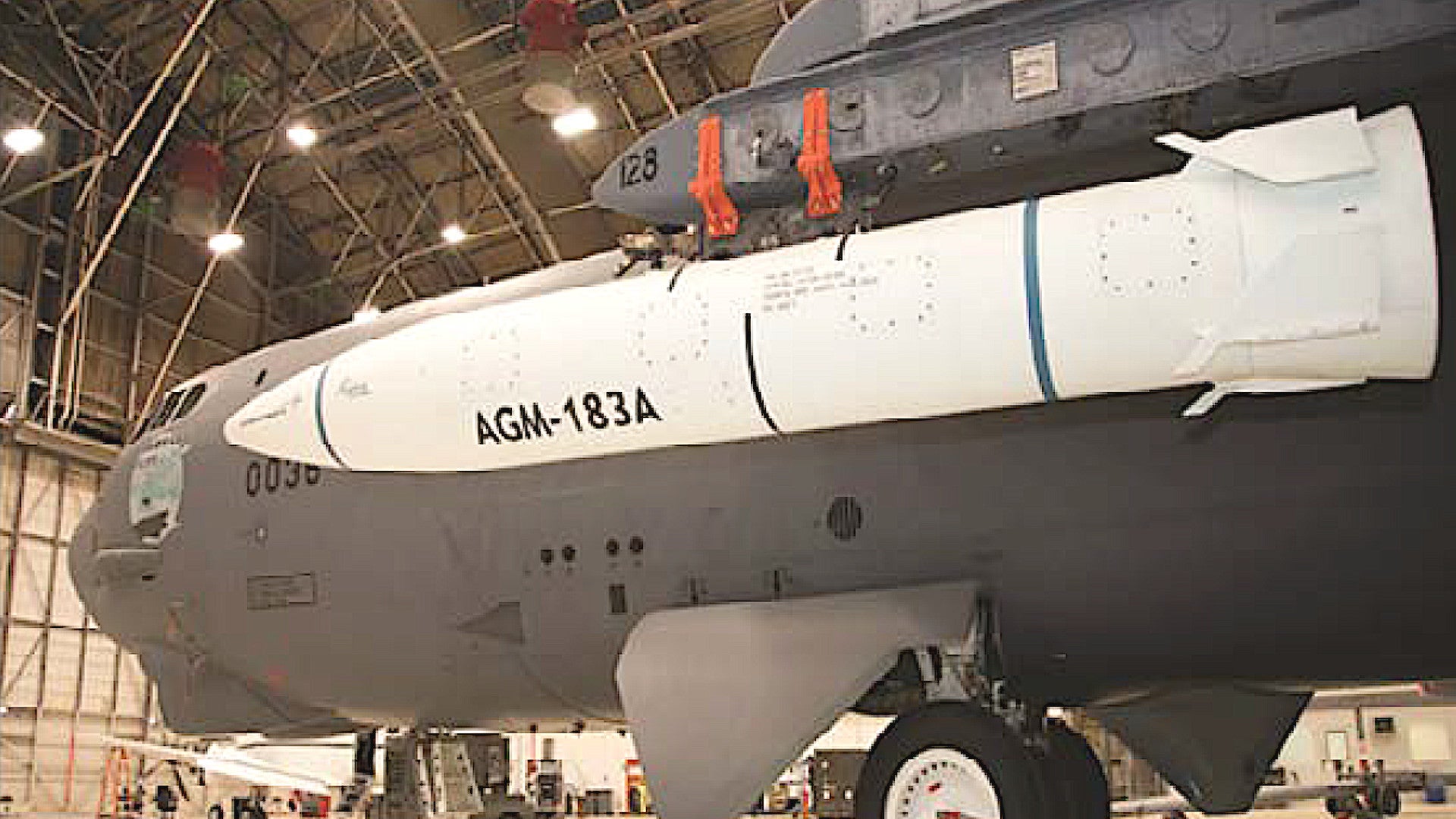The U.S. Air Force plans to buy at least eight prototype AGM-183A Air-launched Rapid Response Weapons, or ARRWs. This initial batch of these hypersonic missiles will support live-fire flight testing, set to begin in 2021, and could help give the service an early operational capability to employ the weapons a year later. However, there are risks of delays as the project is already a year behind schedule and has seen its total cost increase by almost 40 percent.
The Government Accountability Office, a Congressional watchdog, included these and other new details about the ARRW program in a larger annual review of major U.S. military programs, which it released on June 3, 2020. The Air Force began the development of ARRW in 2018, awarding Lockheed Martin the contract to design the weapon that year. The Air Force conducted the first captive carry test flight of an AGM-183A test article in June 2019, using a B-52H bomber, which is set to be the primary launch platform. There are also now discussions about potentially integrating it onto the B-1B bomber using external pylons.
“Program officials stated that they plan to deliver eight hypersonic missiles: four to conduct flight tests and four spares,” GAO’s report explained. “Specifically, [the] ARRW [program] plans to develop an operational prototype with solid-fuel booster, ordnance package, and specialized equipment to enable it to be carried on the B-52H.”

“According to program officials, the program will build knowledge through the flight and operational testing of prototype units, as well as potentially provide an operational capability from the deployment of any remaining spare test units,” the review added.
The complete ARRW missile primarily consists of the aforementioned solid-fuel rocket booster, with its pop-out tail fins, and an unpowered boost-glide vehicle. The rocket booster propels the vehicle to a specific speed and altitude, after which it detaches and glides down along a relatively level flight path to its target at hypersonic speed, which is defined as anything above Mach 5. The ARRW vehicle will be derived from a wedge-shaped design that the Defense Advanced Research Projects Agency (DARPA) and the Air Force have been working on together as part of the separate, but parallel Tactical Boost Glide (TBG) program. DARPA has said in the past that expects TBG’s boost-glide vehicle to reach at least Mach 20.

That kind of speed, combined a level atmospheric flight profile, as well as the boost-glide vehicle’s ability to maneuver in flight in an unpredictable fashion, make these kinds of hypersonic weapons, in general, a particularly attractive way to penetrate through enemy air defenses to prosecute short or no-notice strikes against time-critical or otherwise high-value targets. They are also much harder to spot, let alone attempt to intercept, compared to traditional ballistic missiles, which have more predictable flight paths. This, in turn, makes it difficult for opponents to relocate assets, seek cover, or otherwise defend themselves.
However, the development of wedge-shaped hypersonic boost-glide vehicles has proven to be difficult in the past. This has continued to be the case, with TBG having suffered a year-long delay that has, in turn, pushed back the ARRW program plans by the same amount of time. Aviation Week was first to report that the DARPA-Air Force effort was months behind schedule last month.
GAO has also now revealed that, in March 2019, the ARRW program office announced its developmental cost estimates had grown by 39 percent. The total estimated program cost, at present, in Fiscal Year 2020 dollars, stands at over $1.1 billion, which includes the purchase of the eight prototype weapons, according to the watchdog’s report.
The U.S. Navy and U.S. Army are presently working together to develop sea and ground-launched hypersonic missiles, respectively, which will use a common, conical vehicle that is lower risk than the TBG and ARRW designs, but is also less maneuverable. The Air Force had originally planned to adopt an air-launched hypersonic weapon using the common vehicle, as well. The service announced its desire to cancel that weapon, known as the Hypersonic Conventional Strike Weapon (HCSW), and use those funds for the ARRW effort, in its budget request for the upcoming 2021 Fiscal Year, which it released in February.

GAO warned in its report that “other schedule slips have cascaded through the program” and that there continue to be risks of additional delays. The Air Force acknowledged to the Congressional watchdog that its schedule for ARRW is “aggressive” and insists that it is on track to conduct the first live-fire test launch in October 2021. The service hopes that it will reach early operational capability with the AGM-183A in September 2022, which is also when it hopes to conduct the fourth and hopefully final flight test of a live prototype.
Any of the four spare weapons left over from the test program would then form the core of the available missiles in the Air Force’s arsenal, meaning that this would be a very niche capability, at least initially. This is reminiscent of the service’s relatively small purchases of 30,000-pound class GBU-57/B Massive Ordnance Penetrator (MOP) bunker-buster bombs, another very specialized capability that it maintains. In addition to acquiring steadily more MOPs, the Air Force has also continued to test and upgrade its stockpile of these weapons since they officially entered service sometime between 2010 and 2012. The ARRW program could proceed in a similar way after its early fielding, too.
Whatever the case, with its plan to cancel HCSW, the Air Force is clearly committed to ARRW becoming its first operational air-launched hypersonic weapon in the next two years.
Contact the author: joe@thedrive.com
